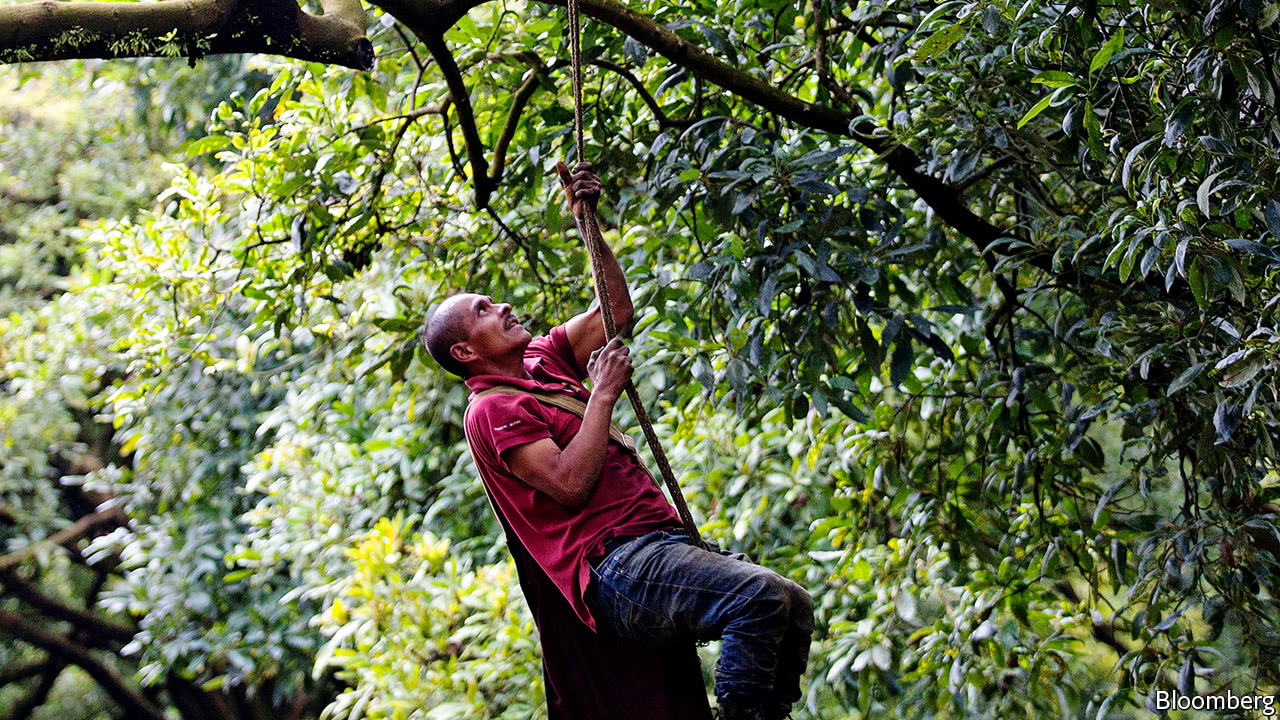
ALTHOUGH New Yorkers are not renowned for their patience, they do not seem to mind waiting their turn for a fresh serving of avocado. At Avocaderia, which claims to be the world’s first avocado bar, in Brooklyn, long queues stretch from the counter outward into a large food hall.
The venue’s popularity is a sign of the times: the avocado is fast becoming America’s favourite fruit. Although domestic production has stayed flat, imports have more than trebled over the past ten years, according to the Department of Agriculture. It estimates that the annual consumption of the average American has increased from about one pound (0.5 kilograms) in 1989 to more than seven pounds in 2016; total consumption that year weighed in at 2.3bn pounds.
-
Five English teams are among the ten highest-earning football clubs
-
Remembering Ursula Le Guin, the true wizard of Earthsea
-
Retail sales, producer prices, wages and exchange rates
-
Foreign reserves
-
A severe case of “truth decay”
-
Britain’s statisticians are at war like never before
America’s enthusiasm for avocados may be dented, however, by soaring prices. The wholesale price for a case of 48 avocados peaked at $83.75 in September, up from $34.45 a year before, according to the American Restaurant Association. Some restaurants were forced to add a surcharge on guacamole, or temporarily to scrap it from their menus altogether. Others swallowed the bill. Chipotle, a Mexican-themed restaurant chain, said that “historically high avocado costs” were a big reason why it posted disappointing financial results last year.
Supply shortfalls, brought about by droughts, storms and wildfires in California, Chile and Mexico, help to explain the jump. Production in California dropped by 44% in 2017. Harvests in Mexico that year were off by 20%. Labour strikes in the country further reduced supply.
Growing global demand is also pushing up prices. Both Chile and Peru have concluded trade agreements with China, eliminating tariffs on their avocado exports. Peru’s avocado sales to China, although small in volume compared with Chile’s and Mexico’s, surged by 3,700% in 2016. Other countries, including Canada and Japan, have also worked up their appetite, raising aggregate imports by 32% between 2014 and 2016.
Raising production will be tricky. This is because avocados are a fussy plant to grow, says Mary Lu Arpaia of the University of California, Riverside. Salinity levels need to be just right, the slope of the terrain not too steep and temperatures stable. Erratic weather conditions can easily kill the crop.
Even so, it seems a good bet that queues like the ones in Brooklyn will multiply. The founders of Avocaderia are already looking for new opportunities to expand after only having been in business for ten months. Demand is huge says one of them, Alessandro Biggi. “On opening day we actually ran out of avocados after just 90 minutes and things haven’t slowed down since.”
Source: economist
Droughts, storms and global demand tests America’s love affair with avocado